 Last additions - Asakusa 浅草 Last additions - Asakusa 浅草 |

Sep 04, 2008
|
|

Sep 04, 2008
|
|

Sep 04, 2008
|
|

Sep 04, 2008
|
|

Sep 04, 2008
|
|

Sep 04, 2008
|
|

Sep 04, 2008
|
|

A sea of people.Sep 04, 2008
|
|

Sep 04, 2008
|
|

Sep 04, 2008
|
|

Sep 04, 2008
|
|

Sep 04, 2008
|
|

The mikoshi is brought in front of Sensoji temple one after another from all directions.Sep 04, 2008
|
|
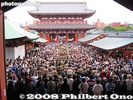
A sea of people in front of Sensoji temple in the area I call "The Pit."Sep 04, 2008
|
|

Asakusa Sanja Matsuri in front of Sensoji temple.Sep 04, 2008
|
|
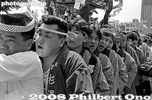
Mikoshi bearersSep 04, 2008
|
|

From 12:30 pm, amid a sea of people, the mikoshi leave one after another. 観音本堂裏広場に集合Sep 04, 2008
|
|

On the second day (Sat.) of the Asakusa Sanja Matsuri at noon, numerous mikoshi (portable shrines) gather behind Sensoji temple, and wait their turn to depart for the streets of Asakusa.Sep 04, 2008
|
|

The mikoshi come from over 40 neighborhoods of Asakusa. 氏子各町神輿連合渡御、発進Sep 04, 2008
|
|

Kaminarimon-dori road is closed to traffic during the festival. Unlike other Asakusa festival processions, there is no parade route. The whole area is teeming with portable shrines. Kaminarimon-dori, Nakamise arcade, and Sensoji temple are main areas.Sep 04, 2008
|
|
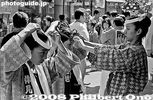
Sanja means "Three Shrines," dedicated to the two fishermen who found the Kannon buddha statue and the wealthy landlord who converted them to Buddhism. The statue became the object of worship that founded Sensoji Temple.Sep 04, 2008
|
|

The three-day Asakusa Sanja Matsuri is held during the weekend of the third Sunday of May. Numerous portable shrines (mikoshi) parade all over Asakusa amid huge crowds. Most of these photos were taken on May 17-18, 2008. (B/W ones taken some years ago.)Sep 04, 2008
|
|

They are deified by Asakusa Shrine next to Sensoji Temple. The festival's formal name is Asakusa Jinja Reitaisai. The festival's formal name is Asakusa Jinja Reitaisai.Sep 04, 2008
|
|

Hagoita HoneyFeb 04, 2008
|
|

Hagoita HoneyFeb 04, 2008
|
|

Hagoita HoneyFeb 04, 2008
|
|

Feb 04, 2008
|
|

Feb 04, 2008
|
|

Feb 04, 2008
|
|

Prices ranhe from 1000 yen to hundreds of thousands of yen.Feb 04, 2008
|
|

Battledore stallsFeb 04, 2008
|
|

Hagoita Honey poses in AsakusaFeb 04, 2008
|
|

At nightFeb 04, 2008
|
|

Feb 04, 2008
|
|

Kabuki actorFeb 04, 2008
|
|

Feb 04, 2008
|
|

Fuji Musume (Wisteria Maiden)Feb 04, 2008
|
|

Feb 04, 2008
|
|

Feb 04, 2008
|
|

Renjishi lion dancersFeb 04, 2008
|
|

MaikoFeb 04, 2008
|
|

Feb 04, 2008
|
|

Feb 04, 2008
|
|

Feb 04, 2008
|
|

Feb 04, 2008
|
|

Feb 04, 2008
|
|

Sports figuresFeb 04, 2008
|
|

Hello KittyFeb 04, 2008
|
|

Feb 04, 2008
|
|

Looking for the right one.Feb 04, 2008
|
|

IchiroFeb 04, 2008
|
|
|

Baseball rivalsFeb 04, 2008
|
|

Prime Minister Kakuei TanakaFeb 04, 2008
|
|

More battledore stalls are on the side of Sensoji temple.Feb 04, 2008
|
|

MouseFeb 04, 2008
|
|
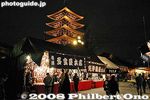
Battledore stalls and 5-story pagodaFeb 04, 2008
|
|

Konishiki (made when he retired)Feb 04, 2008
|
|

Hagoita battledores made in the past with past celebrities.Feb 04, 2008
|
|

Hozomon Gate paper lantern and hagoita stallsFeb 04, 2008
|
|

Cartoon characters such as Anpan ManFeb 04, 2008
|
|

Feb 04, 2008
|
|
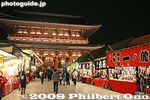
The Battledore Fair is held at night as well.Feb 04, 2008
|
|

Treasure BoatFeb 04, 2008
|
|

Feb 04, 2008
|
|

SpidermanFeb 04, 2008
|
|

Feb 04, 2008
|
|

Feb 04, 2008
|
|

Feb 04, 2008
|
|

Prices and sizes of battledores vary widely. They can be small and as cheap as 1,000 yen. This one is about 18,000 yen.Feb 04, 2008
|
|

Feb 04, 2008
|
|

Kabuki actorFeb 04, 2008
|
|

Feb 04, 2008
|
|

BattledoreFeb 04, 2008
|
|

MaikoFeb 04, 2008
|
|

Battledores were originally used to play a game called hanetsuki, similar to badminton with a shuttlecock. The battledores are now mainly used to dispel bad luck and for decoration.Feb 04, 2008
|
|

Asakusa Hagoita-ichi Battledore Fair, Dec. 17-19Feb 04, 2008
|
|

Asakusa Hagoita-ichi Battledore Fair, Dec. 17-19Feb 04, 2008
|
|

Battledore stallsFeb 04, 2008
|
|

Battledore stallsFeb 04, 2008
|
|

In front of Sensoji temple's Hozomon Gate are battledore stalls on both sides.Feb 04, 2008
|
|

Asakusa Hagoita-ichi Battledore Fair, Dec. 17-19Feb 04, 2008
|
|

One of many Buddha statues within the temple grounds.Feb 04, 2008
|
|

Feb 04, 2008
|
|

Peace monumentFeb 04, 2008
|
|

Feb 04, 2008
|
|

Feb 04, 2008
|
|

Nitemon Gate in the east undergoing renovations. One of the few original buildings still intact. 二天門Feb 04, 2008
|
|

Feb 04, 2008
|
|

Hondo worship hall side view 本堂Feb 04, 2008
|
|

Feb 04, 2008
|
|

Paintings on ceiling inside Hondo worship hall.Feb 04, 2008
|
|

Painting on ceiling of Hondo worship hall.Feb 04, 2008
|
|

Feb 04, 2008
|
|

Feb 04, 2008
|
|

Hondo worship hall side view 本堂Feb 04, 2008
|
|

Hondo worship hall 本堂Feb 04, 2008
|
|

Prayers in front of the altar and offertory box.Feb 04, 2008
|
|

Hondo worship hall altar 本堂Feb 04, 2008
|
|

Inside Hondo worship hall 本堂Feb 04, 2008
|
|

View from Hondo worship hallFeb 04, 2008
|
|
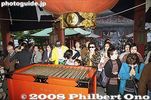
Feb 04, 2008
|
|
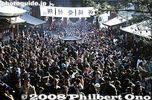
Crowd during New Year'sFeb 04, 2008
|
|

Feb 04, 2008
|
|

Going to worship.Feb 04, 2008
|
|

Feb 04, 2008
|
|

Feb 04, 2008
|
|

Steps going up to the Hondo main worship hall.Feb 04, 2008
|
|

Feb 04, 2008
|
|

Incense burner. Pat the smoke to the part of your body that needs to be healed.Feb 04, 2008
|
|

Hondo worship hall 本堂Feb 04, 2008
|
|

Hondo worship hall 本堂Feb 04, 2008
|
|

Incense burnerFeb 04, 2008
|
|

Incense burner always attracts a crowd.Feb 04, 2008
|
|

Water fountain 沙竭羅龍王像Feb 04, 2008
|
|

Incense burnerFeb 04, 2008
|
|
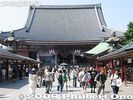
Hondo worship hall was reconstructed in 1958, made of ferroconcrete. The original Hondo was built in 1649 and a National Treasure until it was destroyed during World War II. 本堂Feb 04, 2008
|
|

Giant straw sandal.Feb 04, 2008
|
|

Behind Hozomon Gate is a pair of giant straw sandals hanging on the wall.Feb 04, 2008
|
|

Hozomon GateFeb 04, 2008
|
|

5-story pagoda reconstructed in 1973, made of ferroconcrete. Roof tiles made of aluminum alloy. 五重塔Feb 04, 2008
|
|

Place to buy a omikuji fortune paper.Feb 04, 2008
|
|

Being the main gate, Hozomon Gate is much bigger than Kaminarimon Gate, and it also had a giant paper lantern.Feb 04, 2008
|
|

Hozomon Gate ahead. 宝蔵門Feb 04, 2008
|
|

Hozomon Gate's giant paper lantern.Feb 04, 2008
|
|

Feb 04, 2008
|
|

Feb 04, 2008
|
|

Hozomon Gate, means "Treasure Storage Gate." Indeed, the second floor houses important cultural properties. The gate was reconstructed in 1964, a ferroconcrete building.宝蔵門Feb 04, 2008
|
|

Paper umbrellasFeb 04, 2008
|
|

Approaching another gate called Hozomon Gate. 宝蔵門Feb 04, 2008
|
|

Traditional footwearFeb 04, 2008
|
|

TrinketsFeb 04, 2008
|
|

Small Kannon statues for 25,000 yen.Feb 04, 2008
|
|

Feb 04, 2008
|
|

Kimono shopFeb 04, 2008
|
|

Nakamise sells all kinds of Japanese things. Originally, they catered to religious pilgrims. Now it's mostly tourists.Feb 04, 2008
|
|

Kimono shopFeb 04, 2008
|
|

Nakamise-dori souvenir arcade. One of Japan's most popular and crowded tourist arcades.Feb 04, 2008
|
|

At the end of the year and New Year's, auspicious red and white and New Year's decorations are put up.Feb 04, 2008
|
|

After passing through the Kaminarimon Gate, this is what you see: Nakamise shopping arcade. When it rains, a canopy is put up.Feb 04, 2008
|
|

In spring, a cherry blossom motif is put up.Feb 04, 2008
|
|
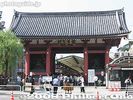
An unusual time when the giant lantern was removed for repairs. Asakusa looks very strange, almost naked, without the giant lantern.Feb 04, 2008
|
|

The lantern is covered with a protective net. The lantern can be collapsed like an accordion to allow tall objects (such as a mikoshi portable shrine during the Sanja Matsuri festival) to pass under the gate. It is also collapsed during typhoons.Feb 04, 2008
|
|

Under the lantern on the gold cap, there's "Matsushita Denki" (Matsushita Electric Industrial Co. or Panasonic). The current Kaminarimon Gate and giant lantern were rebuilt in 1960 as a donation by Konosuke Matsushita.Feb 04, 2008
|
|

The temple is also called Kinryuzan, meaning Golden Dragon. 金龍山Feb 04, 2008
|
|

Giant red paper lantern with the kanji characters "Kaminari Mon." The gate was reconstructed in 1960. The previous one was lost in a fire in 1865.Feb 04, 2008
|
|

Sensoji temple's Kaminarimon Gate. There's a large road in front and also a large paved area where festivals are held. 雷門Feb 04, 2008
|
|

Symbol of Tokyo: Kaminari-mon Gate with a giant red paper lantern. Pass through this gate to reach Asakusa Kannon Temple. 雷門Feb 04, 2008
|
|

One of Tokyo's most photographed buildings: Kaminari-mon Gate with a giant red paper lantern.Feb 04, 2008
|
|

Don't climb up any trees or step into the azalea bushes please. この叔父、つつじに入っちゃダメですよ。Apr 22, 2007
|
|

Right after hitting the first target, the archer starts to pull out another arrow for the next target.Apr 22, 2007
|
|
|
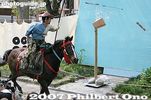
The wooden target boards have an envelope of confetti stuck on the back so it explodes when the target breaks apart.Apr 22, 2007
|
|

Apr 22, 2007
|
|
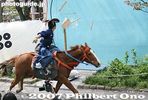
This is the first target which is near the starting point. Love it when the target shatters like that.Apr 22, 2007
|
|

Apr 22, 2007
|
|

Apr 22, 2007
|
|

Local high school girl proudly rides back to the starting point amid applause.Apr 22, 2007
|
|
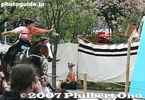
The crowd favorite was this high school girl. See the arrow pierce the wooden target.Apr 22, 2007
|
|

Woman archerApr 22, 2007
|
|
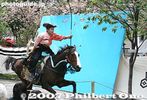
Apr 22, 2007
|
|

Apr 22, 2007
|
|

This is the second target at the center of the archery course. This is where the biggest crowd was.Apr 22, 2007
|
|

Woman archer misses her target.Apr 22, 2007
|
|

Apr 22, 2007
|
|
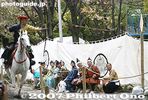
Arrow in mid-air. Asakusa Yabusame.Apr 22, 2007
|
|

Apr 22, 2007
|
|

Apr 22, 2007
|
|

The archers return to the starting point.Apr 22, 2007
|
|

Dead on!Apr 22, 2007
|
|

Apr 22, 2007
|
|

Setting up the wooden target.Apr 22, 2007
|
|

Bull's eye. This is the third and last target along the course. It is quite difficult to hit all three targets, especially the last one.Apr 22, 2007
|
|

The horseback archer raises his bow and arrow high in the air as he nears the target.Apr 22, 2007
|
|

Apr 22, 2007
|
|

Deer skinApr 22, 2007
|
|

Apr 22, 2007
|
|

Apr 22, 2007
|
|

First, the horses, archers, and attendants parade along the entire course.Apr 22, 2007
|
|

Yabusame archerApr 22, 2007
|
|

ArcherApr 22, 2007
|
|

Wooden targetsApr 22, 2007
|
|

The 25th Asakusa Yabusame horseback archery was held on April 21, 2007 at Sumida Park.Apr 22, 2007
|
|

Parallel to Sumida River, the archery course is straight and narrow, stretching from the Tobu Line bridge to Kototoi Bridge.Apr 22, 2007
|
|

Raised dirt along the archery course.Apr 22, 2007
|
|

The course has three targets which the archers will shoot arrows at.Apr 22, 2007
|
|

Binzasara Dance from Asakusa Shrine. This dance also originated in Asakusa by farmers who celebrated the completion of a tea house in Asakusa near the Asakusa Sensoji Temple. It is now a dance to celebrate a good harvest. びんざさら舞
びんざさら舞
三社大権現祭礼 船渡御Nov 09, 2005
|
|

Oiran Dochu Procession. Passing by Matsuya Dept. Store and Tobu Asakusa Station.Nov 09, 2005
|
|
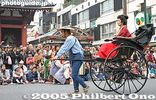
Cultural enlightenment: Higuchi Ichiyo (1872-96) was a critically-acclaimed novelist who also graces the 5,000 yen bill. At age 24, she died of tuberculosis. 文明開化 樋口一葉Nov 09, 2005
|
|

Asakusa Folk Entertainment. Behind the Asakusa Temple, there was a variety of shows, street performers, plays, and other characters. Asakusa has always been Tokyo's entertainment center. 浅草奥山風景Nov 09, 2005
|
|
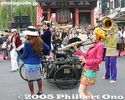
Asakusa Folk Entertainment. This was the last act. Somewhat tacky end to the festival.Nov 09, 2005
|
|

Shinsengumi disbanded when the shogunate collapsed and Emperor Meiji became the head of state. The Shinsegumi wore a distinct costume with a light blue haori. 新撰組Nov 09, 2005
|
|

Shinsengumi新撰組Nov 09, 2005
|
|
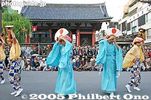
Asakusa Folk Entertainment 浅草奥山風景Nov 09, 2005
|
|

1868: Transition from Edo to Tokyo (Saigo Takamori). With the Meiji Restoration in 1868, the ruler of Japan shifts from the shogun to an oligarchy ruling under the banner of the emperor. Edo is renamed Tokyo. 江戸から東京へWith the Meiji Restoration in 1868, the ruler of Japan shifts from the shogun to an oligarchy ruling under the banner of the emperor. Edo is renamed as "Tokyo (Tokio)," meaning "Eastern Capital," as ordered by Emperor Meiji.
江戸から東京へNov 09, 2005
|
|

Townsend Harris and Commodore Perry 黒船来航・浦賀奉行Nov 09, 2005
|
|
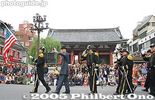
Townsend Harris and Commodore Perry, played by Americans from Yokosuka Naval Base. 黒船来航・浦賀奉行Nov 09, 2005
|
|
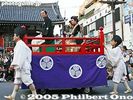
Year 1867: Tokugawa Yoshinobu, the 15th and last shogun who surrendered power to the emperor and fled Edo in 1868 following military defeat by powerful provincial lords seeking to return power to the Emperor. 第十五代将軍 徳川慶喜第十五代将軍 徳川慶喜Nov 09, 2005
|
|
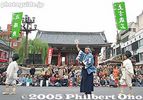
Shinsengumi was a Kyoto-based, pro-shogunate group of skilled swordsmen of Edo and masterless samurai in Kyoto formed to suppress the growing opposition (especially from Choshu) against the shogunate in favor of restoring the Emperor to power. 新撰組The group disbanded when the shogunate collapsed and Emperor Meiji became the head of state. 新撰組Nov 09, 2005
|
|

Edo Geisha江戸芸者Nov 09, 2005
|
|

This was the only one who had a smile. The others were quite serious and solemn.Nov 09, 2005
|
|

Mistress Okichi, the infamous mistress of Townsend Harris, America's first ambassador to Japan when he was in Shimoda. Another mistress was provided to Harris' interpreter.Okichi was the infamous mistress of Townsend Harris, America's first ambassador to Japan. Another mistress was provided to Harris' interpreter.
黒船来航・浦賀奉行Nov 09, 2005
|
|

Arrival of Black Ships 黒船来航・浦賀奉行黒船来航・浦賀奉行Nov 09, 2005
|
|

Edo Geisha江戸芸者Nov 09, 2005
|
|
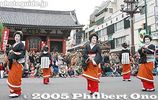
Edo Geisha portrayed by Asakusa geisha.江戸芸者Nov 09, 2005
|
|

Edo Geisha江戸芸者Nov 09, 2005
|
|

Edo Geisha江戸芸者Nov 09, 2005
|
|

Edo Geisha江戸芸者Nov 09, 2005
|
|

Edo Geisha江戸芸者Nov 09, 2005
|
|

Edo Geisha, She was the only one with a smile.Nov 09, 2005
|
|
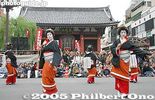
Edo Geisha江戸芸者Nov 09, 2005
|
|
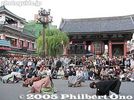
Mito Komon: He travels around incognito to help people being oppressed by corrupt officials, etc. When he reveals his real identity to the villains, they instantly go down on their knees and maybe even poop in their pants.Bowing to Mito Komon.
江戸の人気者Nov 09, 2005
|
|

Edo Geisha 江戸芸者江戸芸者Nov 09, 2005
|
|
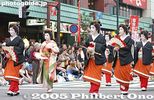
Edo Geisha. These geisha are from Asakusa, which also happens to be one of Tokyo's geisha districts. 江戸芸者Nov 09, 2005
|
|

Edo Geisha江戸芸者Nov 09, 2005
|
|
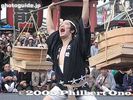
Edo's Popular People--Isshin Tasuke, a fish peddler and a very popular fictional character. 江戸の人気者(一新太助)Nov 09, 2005
|
|

Edo Geisha江戸芸者Nov 09, 2005
|
|
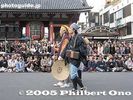
Edo's Popular People: Mito Komon, an important lord related to the Tokugawa Shogun. He was based in Mito, Ibaraki Pref. Most people know him through the popular Mito Komon TV series. Most people know him through the popular Mito Komon TV series where he is shown traveling around incognito to help people being oppressed by corrupt officials, etc. When he reveals his real identity to the villains, they instantly go down on their knees and maybe even poop in their pants.
江戸の人気者Nov 09, 2005
|
|

Ikyu, the villain. 花川戸助六 意休Nov 09, 2005
|
|
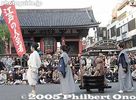
Edo's Popular People 江戸の人気者江戸の人気者Nov 09, 2005
|
|
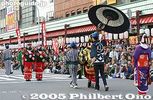
Oiran Dochu Procession花の吉原おいらん道中Nov 09, 2005
|
|

Hanakawa do Sukeroku, a favorite son of Asakusa and famed womanizer. He was loved by the people since he sided with the weak and defeated the strong. Made into a kabuki character. 花川戸助六 意休Nov 09, 2005
|
|
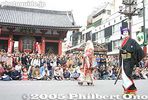
Hanakawa do Sukeroku & Ikyu (kabuki characters). Sukeroku and Ikyu vie for the love of a courtesan named Agemaki. 花川戸助六 意休Nov 09, 2005
|
|

Oiran Dochu Procession花の吉原おいらん道中Nov 09, 2005
|
|

Oiran Dochu Procession in front of Kaminarimon Gate, Asakusa.花の吉原おいらん道中Nov 09, 2005
|
|
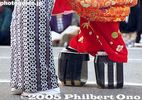
Oiran Dochu Procession. Her clogs. 花の吉原おいらん道中Nov 09, 2005
|
|
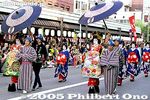
Oiran Dochu Procession. This picture was taken in the 1990s when they had two oiran in the festival. Now they have only one. 花の吉原おいらん道中Nov 09, 2005
|
|

Oiran Dochu Procession花の吉原おいらん道中Nov 09, 2005
|
|
|
|
|

Oiran Dochu Procession花の吉原おいらん道中Nov 09, 2005
|
|

She walks in a very slow and stylized way, her feet taking figure-8 steps. She needs the man's shoulder to steady herself.Nov 09, 2005
|
|

The oiran courtesan is escorted by two little girls called kamuro. 花の吉原おいらん道中Nov 09, 2005
|
|

Oiran Dochu Procession. The two little girls are called kamuro.Nov 09, 2005
|
|

Oiran Dochu ProcessionNov 09, 2005
|
|
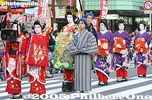
Oiran Dochu Procession. This is definitely the highlight of the festival, and my favorite part of the festival. 花の吉原おいらん道中Nov 09, 2005
|
|
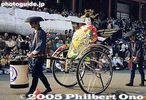
Oiran Dochu Procession. This picture was taken next to the Sensoji Temple behind which the parade starts. Before, one oiran courtesan rode in a rickshaw. 花の吉原おいらん道中花の吉原おいらん道中Nov 09, 2005
|
|

Saruwaka Sanza, Edo Kabuki猿若三座 江戸歌舞伎Nov 09, 2005
|
|
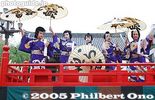
Saruwaka Sanza, Edo Kabuki. "Sanza" means three theaters. 猿若三座 江戸歌舞伎猿若三座 江戸歌舞伎Nov 09, 2005
|
|
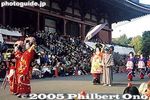
Oiran Dochu Procession 花の吉原おいらん道中Nov 09, 2005
|
|
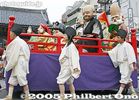
Seven Gods of Good Fortune 浅草市村座七福神舞浅草市村座七福神舞Nov 09, 2005
|
|

Firemen's Acrobatics大岡越前守と江戸町火消Nov 09, 2005
|
|
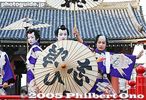
1624: Saruwaka Sanza, Edo Kabuki. Kabuki was started in the early Edo Period in 1624. Later, Edo's three licensed kabuki theaters named the Nakamura-za, Ichimura-za, and Morita-za were relocated to Asakusa in an area called Saruwaka."Sanza" means three theaters. 猿若三座 江戸歌舞伎Nov 09, 2005
|
|

1717: Firemen's Acrobatics. Ooka Echizen no Kami Tadasuke (1677-1751) and Edo Fire Brigade. Ooka was a famous Edo magistrate who organized fire brigades in Edo. 大岡越前守と江戸町火消Nov 09, 2005
|
|

Firemen's Acrobatics大岡越前守と江戸町火消Nov 09, 2005
|
|

This story of loyalty soon becomes a timeless classic known as "Chushingura." 義士の討ち入りNov 09, 2005
|
|

Firemen's Acrobatics 大岡越前守と江戸町火消Nov 09, 2005
|
|
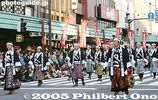
On Dec. 14, 1702, Asano's 47 masterless retainers avenged their master's death by attacking and beheading Kira at his residence in Ryogoku.義士の討ち入りNov 09, 2005
|
|

Genroku Flower-Viewing DanceNov 09, 2005
|
|

Genroku Flower-Viewing Dance 元禄花見踊りNov 09, 2005
|
|

Year 1702: The 47 masterless retainers arrive to avenge their lord. In 1701 in the shogun's palace, Lord Asano Naganori draws his sword in a fit of anger and cuts Kira Yoshinaka, the highest-ranking master of protocol who had mocked Asano.Asano was immediately forced to commit ritual seppuku. At the end of the following year, his 47 masterless retainers avenged their master's death by attacking and beheading Kira at his residence in Ryogoku. This story of loyalty soon becomes a timeless classic known as "Chushingura."
義士の討ち入りNov 09, 2005
|
|
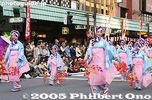
Genroku Flower-Viewing Dance. The Genroku Period was 1688-1704, a time of cultural flowering among the masses. 元禄花見踊りNov 09, 2005
|
|
| 834 files on 4 page(s) |
 |
3 |
|